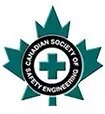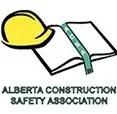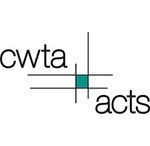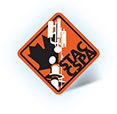Posted: 1 Nov '23

Guardrails are crucial safety features on elevated walking-working surfaces as they protect against accidental falls. Installing the railings eliminates the need for personal fall arrest systems, among other benefits. While there are many types of guardrails: standard, freestanding, radius, top-fix, and parapet, suitable for different applications, installation must follow specific OSHA guidelines to guarantee safety.
This article highlights the importance of prioritizing guardrail installation and briefly explains OSHA guidelines. You'll also find information on how we can help with safety guardrail sales & installation. Call us for more information.
Guardrails are one of the fall arrest systems required on elevated walking-working surfaces. On construction sites where workers are exposed to vertical drops of 6+ feet, OSHA requires employers to provide protection by installing guardrails, deploying safety nets, or ensuring each employee has personal fall arrest systems.
One of the top advantages of installing guardrails is that employees do not require to wear personal fall protection gear. However, you must adhere to OSHA guidelines when installing the railings. Otherwise, failing to observe the requirements can expose your employees to potential accidents, besides incurring fines for non-compliance.

Below is an overview of the regulations.
Having looked at OSHA requirements for guardrail installation, let's discuss why the systems should be at the top of your safety checklist.
Guardrails prohibit unauthorized access to dangerous areas and protect workers when working/walking on those surfaces. Multiple employees can access the area without the need for personal protection arrangements.
Guardrail sales & installation eliminate the need for workers to use a harness and lanyard whenever they have to work on heights. This improves safety as the risk of negligence (e.g., failure to conduct proper personal protection inspection) is significantly minimized.
Workers work more flexibly and efficiently as their movement is not restricted, as with personal fall protection gear. In addition, less maintenance and inspection are required, which saves time and improves productivity.
Installing guardrails is fast and a one-off activity. Unlike personal protection systems, railings require less maintenance without compromising employees' safety.
Using a guardrail as an arrest protection system does not require training the workers on using it. Once installed, the system is ready for use by any worker accessing the elevated working-walking area.



Guardrail sales & installation enhances safety on elevated working-walking surfaces. It's a convenient option compared to other fall protection systems, such as harness/lanyards and anchors. However, installation must follow OSHA guidelines to guarantee worker safety and for compliance purposes. Guardrail installation is fast and it's easy to maintain. Other benefits of using the system include universal protection, increased worker efficiency, and improved safety. Contact us today for safety guardrail sales & installation.
REQUEST INFO ON OUR COURSES



